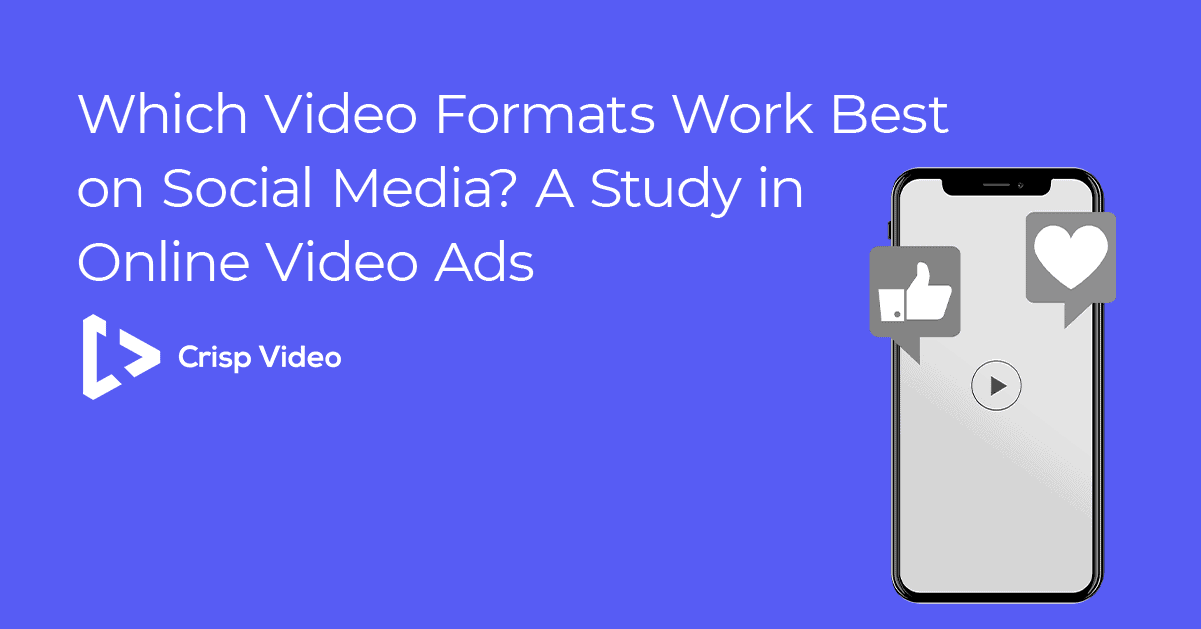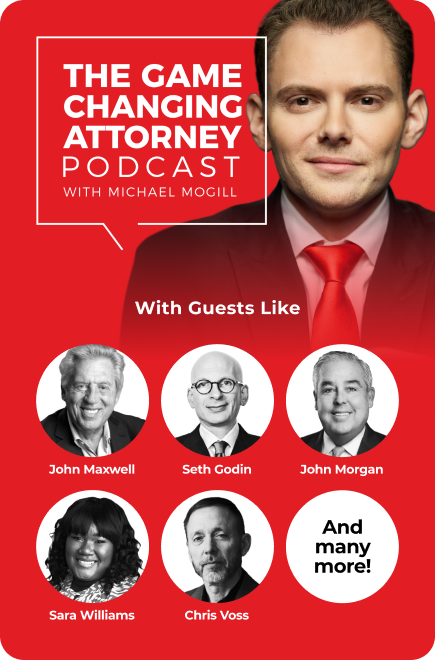To get our best guidance on defining your unique value proposition, communicating it through engaging video, and getting the most out of your law firm’s videos all in one comprehensive resource, check out The Game Changing Attorney. This is a book you’ll want to keep on your shelf to pull out every step of the way.
What’s the Best Way to Leverage Video on Social Media?
Is there a way to maximize engagement and minimize spend on each social media platform using video content you already have?
Is some content more effective on some platforms, while other content is more successful elsewhere?
Most importantly, is there a way to reach everyone in your target market without breaking the bank?
Spoiler alert: the answer is yes. And we’re about to show you just how to leverage the strategy our team discovered in your own law firm.
Here’s the thing: it’s no secret that video works well on social media. There are plenty of articles, case studies, and infographics illustrating the impact video can have when incorporated into a marketing strategy. But just to make sure everyone is on the same page, here are some mind-blowing statistics:
- YouTube users watch 1 billion hours of video content every day
- More video content is uploaded in 30 days than the major U.S. television networks have created in 30 years
- 90% of customers say video helps them make buying decisions and 64% of customers say that seeing a video makes them more likely to buy
But there’s one thing these statistics neglect to include — there are certain factors that have a huge influence on the success of your video, including the video specs (dimensions, quality, etc.), content, and length.
Social media platforms have been adjusting their algorithms to favor video content over any other form of content, but if your video isn’t optimized for that platform, you won’t see the same results.
For instance, we already know a 2-minute brand video works wonders when embedded on a company homepage — it can effectively increase web conversions by up to 300%. But does it have the same impact when run as an ad that plays after someone watches a Facebook video? We weren’t sure.
So, our team decided to run an experiment. What if we took videos we already had, cut them up in different lengths and dimensions, and tested them on each of the Big Four (Facebook, YouTube, LinkedIn, Instagram) social channels?
Would a 6-, 15-, or 30-second version of a video that was originally 2 minutes in length reach more people? After all, attention spans are only getting shorter, so we posited that a shorter video that still packs a punch would be a more effective way to reach a wider audience without breaking the bank — and without producing a single new video.
It also opened up new advertising channels for us, as certain ad formats (like a YouTube bumper ad) don’t allow you to upload videos any longer than 6-15 seconds.
We thought the experiment was worth a shot — and we were shocked by the results. Below you’ll see a campaign summary, but for more in-depth statistics and campaign highlights, you should check out the full case study.
The Experiment
This experiment was two-fold:
First, we wanted to see if running content of different lengths (6-, 15-, and 30-seconds) had any advantage over running a standard full-length brand video (generally around 2 or 3 minutes in length). Would these altered lengths resonate differently across the different social media platforms?
Second, we wanted to see if running content of different dimensions (either the cinematic 16:9 dimensions or square dimensions) had an impact on engagement and deliverability.
We decided to test our hypothesis by taking Crisp’s original brand video and cutting it down into a 6-second, 15-second, and 30-second spot. In addition, we created both square and cinematic (16:9) versions to see if a video’s aspect ratio affected engagement and reach. We also hardcoded subtitles onto each video to increase accessibility for users watching the video without sound.
We ran ads on the following platforms:
- Facebook: the world’s most popular social media platform
- LinkedIn: one of the world’s most trusted platforms for networking and professional connections
- Instagram: the fastest-growing social media platform
- YouTube: the world’s second-largest search engine and go-to platform for video consumption
Our total investment in the experiment (accounting for ad costs across all platforms) was $714.66. We spent between $150-$200 per platform over the course of approximately two weeks.
The Results: Facebook

The Results: Instagram

The Results: YouTube

The Results: LinkedIn

You can view an in-depth campaign analysis and additional results for each platform in our case study.
Lead Generation vs. Awareness
Many of you may be wondering, “Sure, there are a lot of views, but where are the conversions? The appointments? The clients?” We hear you. But the goal of this campaign was not to generate conversions, but to boost top-of-funnel awareness. There’s an important distinction. You see, at any given time, only 3% of your target market is ready to move forward (make a purchase decision). By focusing solely on lead generation, you’re missing out on about 97% of your market. And, what’s worse is that your competitors are also competing for that same 3%.
Sounds bleak, right? It doesn’t have to be. Instead, you can shift your efforts to investing in a long-term multi-channel marketing strategy that allows you to consistently increase your online audience while nurturing that audience over time until they’re ready to convert.
Investing more money in top-of-funnel awareness campaigns means that more people know who you are. So while they may not be ready to hire an attorney right now, if they see your firm’s name across four separate channels multiple times, they’re going to think of you as soon as a legal need arises.
And once you build out the top of your funnel, you can begin nurturing that audience with educational content, more videos, exclusive downloads, and other methods of communication like emails and direct mail.
Conclusion: The Future of Legal Marketing
This might be a bold claim, but hear us out: if you’re not incorporating video into your current marketing efforts, you could be leaving hundreds of thousands of dollars in revenue on the table.
You can do the math yourself — just take the lifetime average value of a client, and then estimate how many new clients you could take on if you were able to reach hundreds of thousands of people a month on the most prominent social channels for just pennies on the dollar. It doesn’t seem unreasonable to project that by exponentially increasing your firm’s top-of-mind awareness, it will drive more conversions later on down the funnel.
Considering the brevity of the experiments and the relatively low budget, we were astounded at the results we saw. It proved to us that in an age where people want information quickly, conveniently, and at their fingertips, catering to their preferences with shorter video content can be incredibly effective.
By expanding your online reach, you can increase your offline impact.
If you already have a brand video, the next steps are simple: reduce that video down to shorter versions, and then leverage those shorter cuts online. Then, when users go to your website, they’ll see your full-length brand video (which highlights your UVP) and have a much greater chance of converting.
And if you don’t have a brand video, we recommend producing one before producing any shorter social cuts — remember, your brand video was designed to optimize conversions at the bottom of the funnel, while your social cuts are best used at the top.
If you only rely on those social cuts, you may be missing the key piece to draw users in and convince them to move forward.
Each of these video ads complements one another to create an immersive brand awareness campaign that drives traffic, boosts conversions, and generates leads.
To get Crisp’s best guidance on defining your unique value proposition, communicating it through engaging video, and getting the most out of your brand video all in one comprehensive resource, check out The Game Changing Attorney. This is a book you’ll want to keep on your shelf to pull out every step of the way.
So, What Did We Do Next?
This experiment reinforced our idea that people are looking for different things — at different times — during their buyer’s journey. In the Awareness stage, and even the Consideration stage, your audience will respond to content that piques their interest but doesn’t overload them with information.
We found that our original hypothesis was not only proven correct, but uncovered an incredible opportunity for other marketers to spread their brand’s messaging at a fraction of the cost.
Just imagine: instead of investing in a traditional marketing campaign (like a four-week billboard lease) which offers minimal tracking and a huge investment, you could increase the impact of your marketing and advertising by spending a fraction of the investment and tracking the whereabouts and engagement rates of more than 20,000 people.
At the end of this experiment, we were pretty thrilled. But we didn’t stop there. Sure, this advertising tactic worked for Crisp, but would it work for law firms? We obviously couldn’t extrapolate our findings to a completely different industry.
It was time for another experiment.
This time, we took the same exact strategies we used for our internal experiment and ran a test campaign on two different law firms in two different markets: one in the Tampa Bay Area and one in Lafayette, LA.
Both law firms already had a Crisp brand video, so we cut those videos down into the 6-, 15-, and 30-second spots and exported them in square and cinematic dimensions. Then, we got to work.
Check out the results in our case study.









